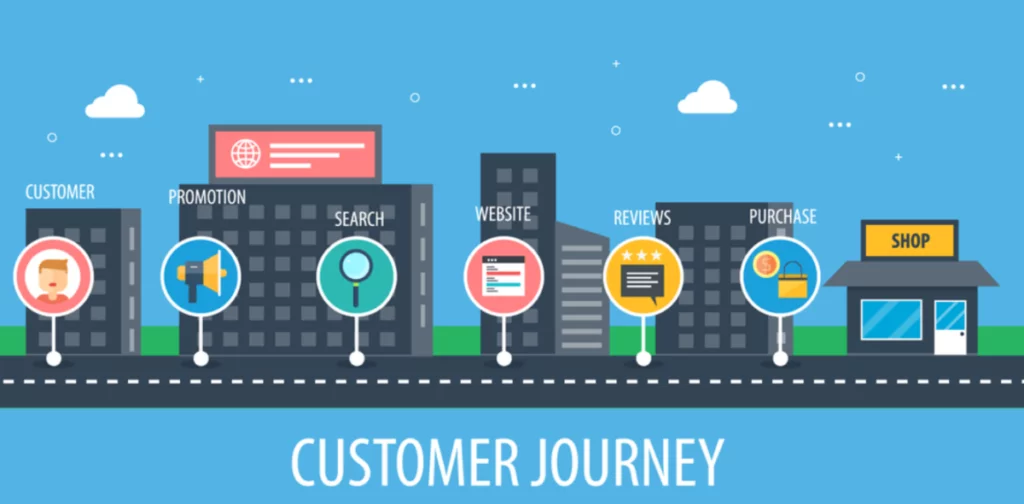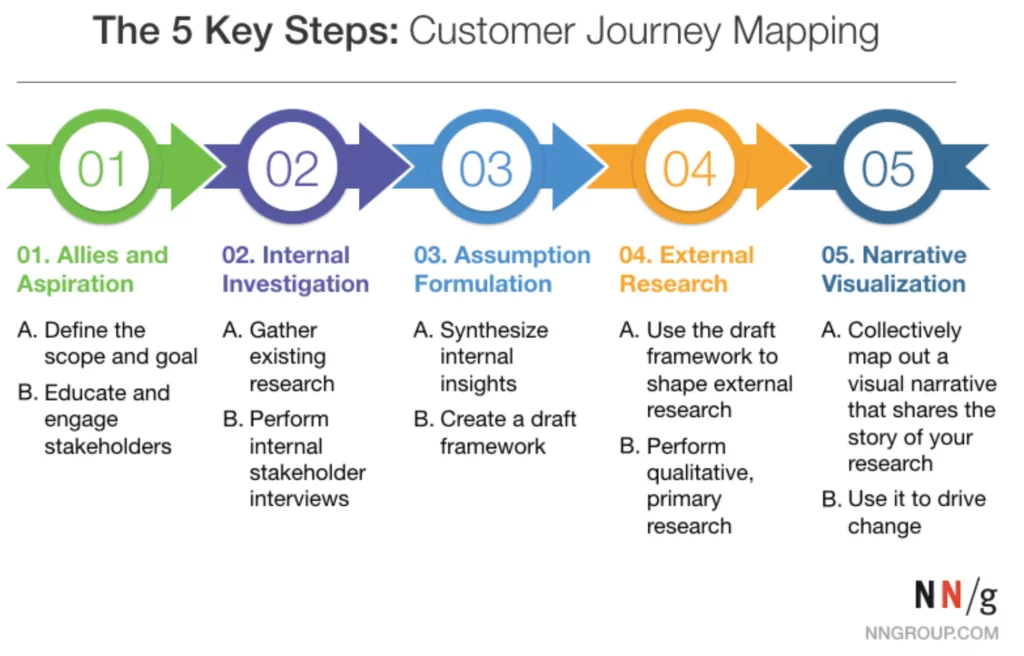Journey mapping is an excellent tool that product teams can use to better understand their customers and those customers’ needs.
A journey map, in essence, divides up the customer journey into a number of stages, then provides goals and metrics for each stage of the journey.
Journey mapping as a technique
Useful for product managers, designers, and sales teams alike, the journey mapping technique helps teams:
- Segment, analyze, and understand each stage of the customer life cycle
- Gain insight into product design and usability, as well as the customer experience
- Improve onboarding, training, and adoption efforts
- Reference a single document during design, sales, adoption, and other customer-facing activities
- Enhance the customer experience
Though these tools take a certain amount of time and effort to implement, they are easy to learn.
Below, we’ll take a look at the role of journey mapping in the modern business, types of journey maps, and where these tools fit into the digital workplace.
User journey maps vs. customer journey maps
Journey mapping is used in a number of fields, but each field will use a different “flavor,” depending on the circumstances.
Two of the most common terms used to reference journey maps are “customer journey maps” and “user journey maps.”
According to the user experience consultancy, Nielsen Norman Group, the two terms can be used interchangeably.

Technically speaking, there is a difference, since not all product users are actually paying customers.
Though this point is worth noting, which term one uses is less important than the actual content of the journey map.
Regardless of the terminology, all journey maps describe the same territory:
- The user. The user, or the customer, around which a particular journey map is centered.
- The scenario. A predefined, linear journey from one point to another, which can cover the entire user journey or only a small segment.
- Goals. Specific goals that users are intended to take at each point along their journey.
All of these elements of the journey map will naturally differ based on the circumstances.
Some may cover the pathway to purchase, while others may cover the product adoption cycle.
Regardless of the term or the emphasis, the process for designing a user journey map remains essentially the same.
Journey mapping in 5 steps
The Nielsen Norman Group advises a five-step process that focuses on:
- Defining goals and obtaining buy-in. A journey map is built around a business effort, which requires a team of allies and a well-defined mission, or scope.
- Collect data and perform research. The foundation of any journey map should be research, such as market research, existing customer insights, and interviews with stakeholders.
- Synthesize insights and create a draft. During this stage, project coordinators should formulate a hypothesis about what the journey should look like, then turn that hypothesis into a draft.
- Use the draft to form external research. External research can help validate assumptions and ensure that there are no gaps in knowledge.
- Visualize the journey map and use it to drive change. A visual narrative or map, replete with goals, descriptions, high points, and pain points, will act as the vehicle to share research with the rest of the team.

The Nielsen Norman Group goes on to say that each journey map should contain five components:
- The actor, or the person who experiences the journey
- The scenario that defines the specific context of that journey
- The phases of the journey
- Actions, mindsets, and emotions that the actor experiences during each stage
- Opportunities and insights gained from each stage
Though there are different perspectives on journey maps, many industry leaders adhere to the same fundamental concepts.
Adobe and NGDATA, for instance, both advocate the same core process for journey mapping.
Though these fundamentals will likely never change, digital technology is having an impact on journey mapping.
Journey mapping, now and in the future
Digital technology is affecting every area of business, including how businesses develop journey maps.
For instance:
- Real-time user data provides immediate insight into the user experience, allowing user experience managers to adjust customer journeys – and journey maps – more quickly
- Predictive algorithms can personalize user journeys based on user activity
- Chatbots can interact with users directly, which can add interactivity at virtually any stage of the user journey
- Digital adoption platform analytics can offer insight into user behavior, then tailor the user journey accordingly
WalkMe’s digital adoption solution is one example of a platform that is helping to transform the practice of digital journey mapping.
Through AI-powered analytics, interactive training, contextualized guidance, and other features, WalkMe can help organizations deliver user experiences that are personalized and continually evolving.
However, today we are just witnessing the beginning of a much larger trend.
In the coming years and decades, we can expect to see journey mapping and the user journey to continue evolving, becoming more dynamic and more user-centered.


